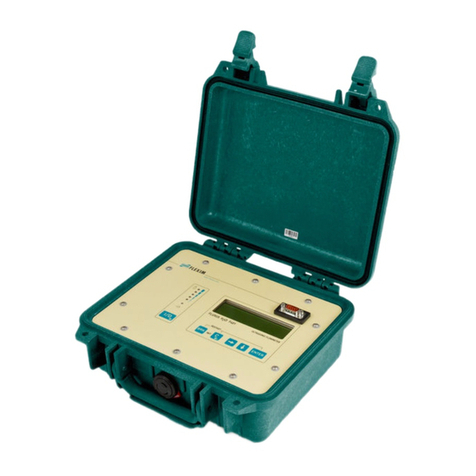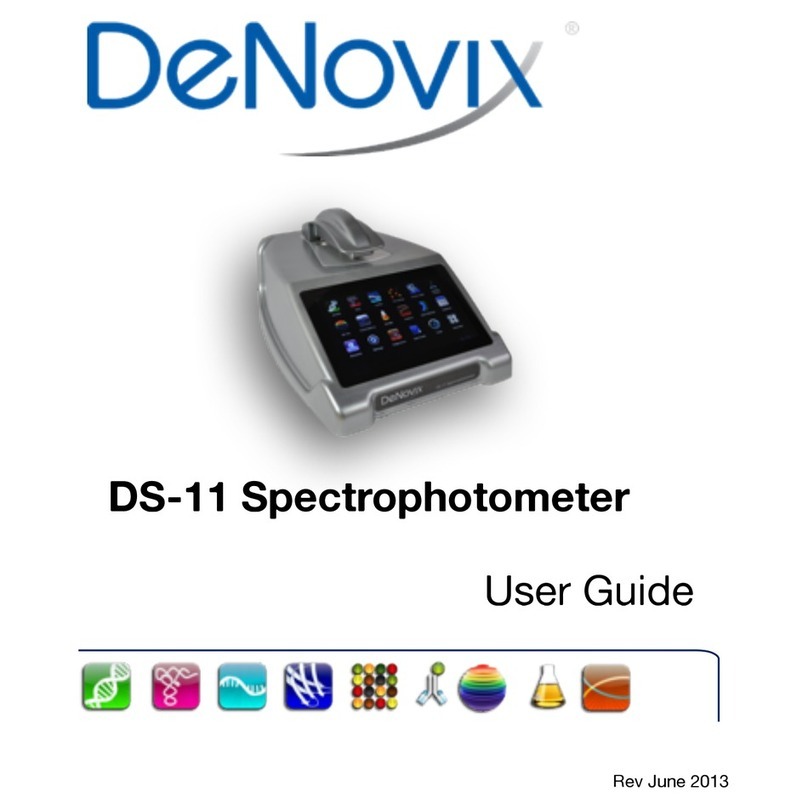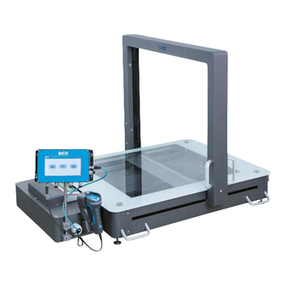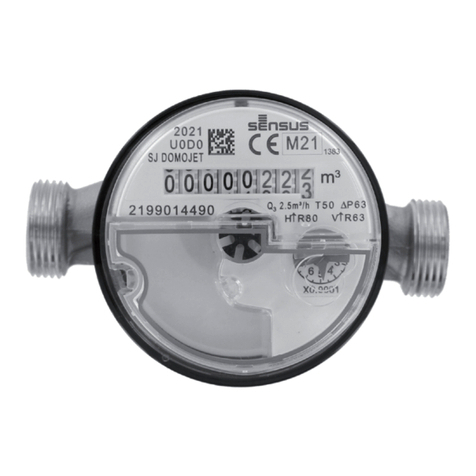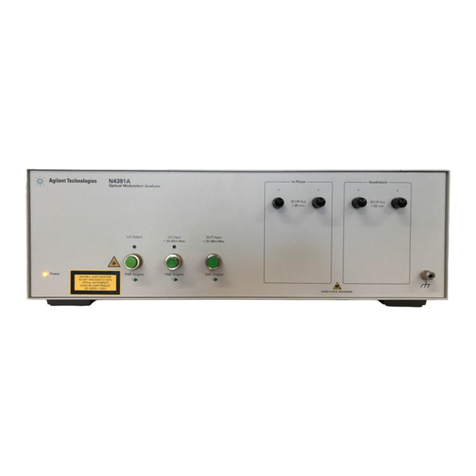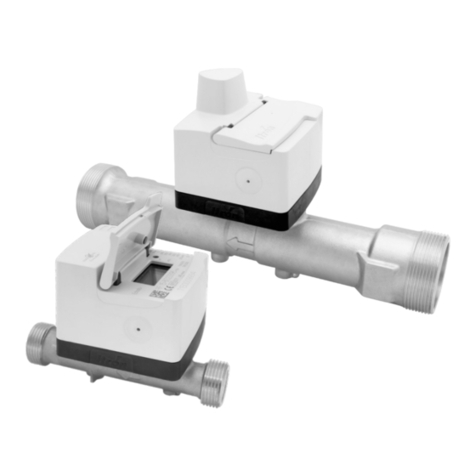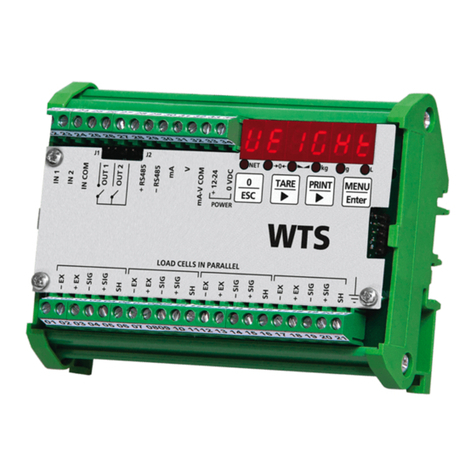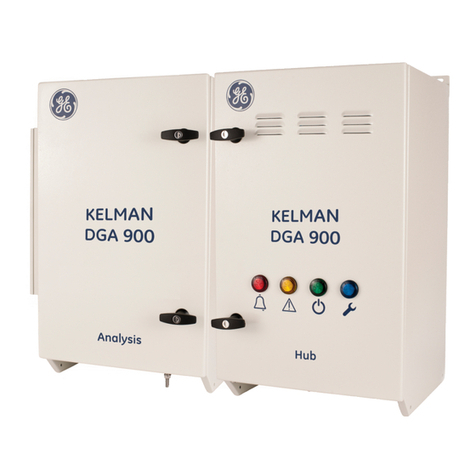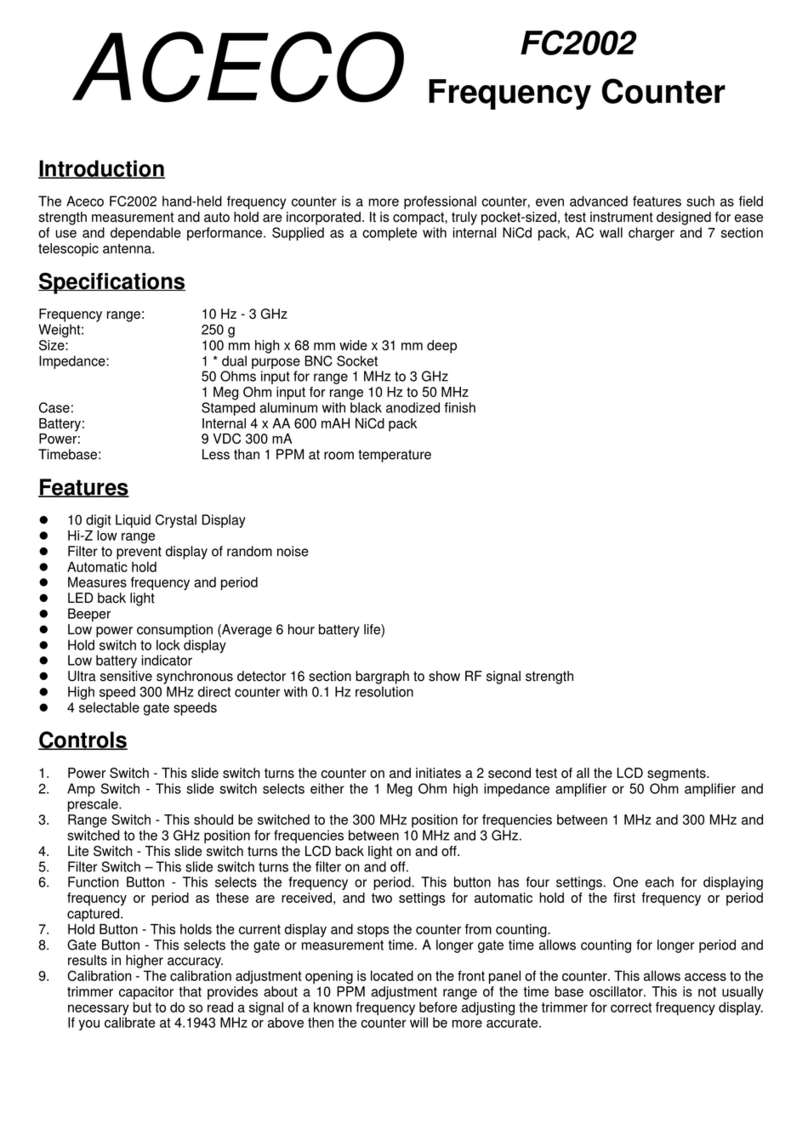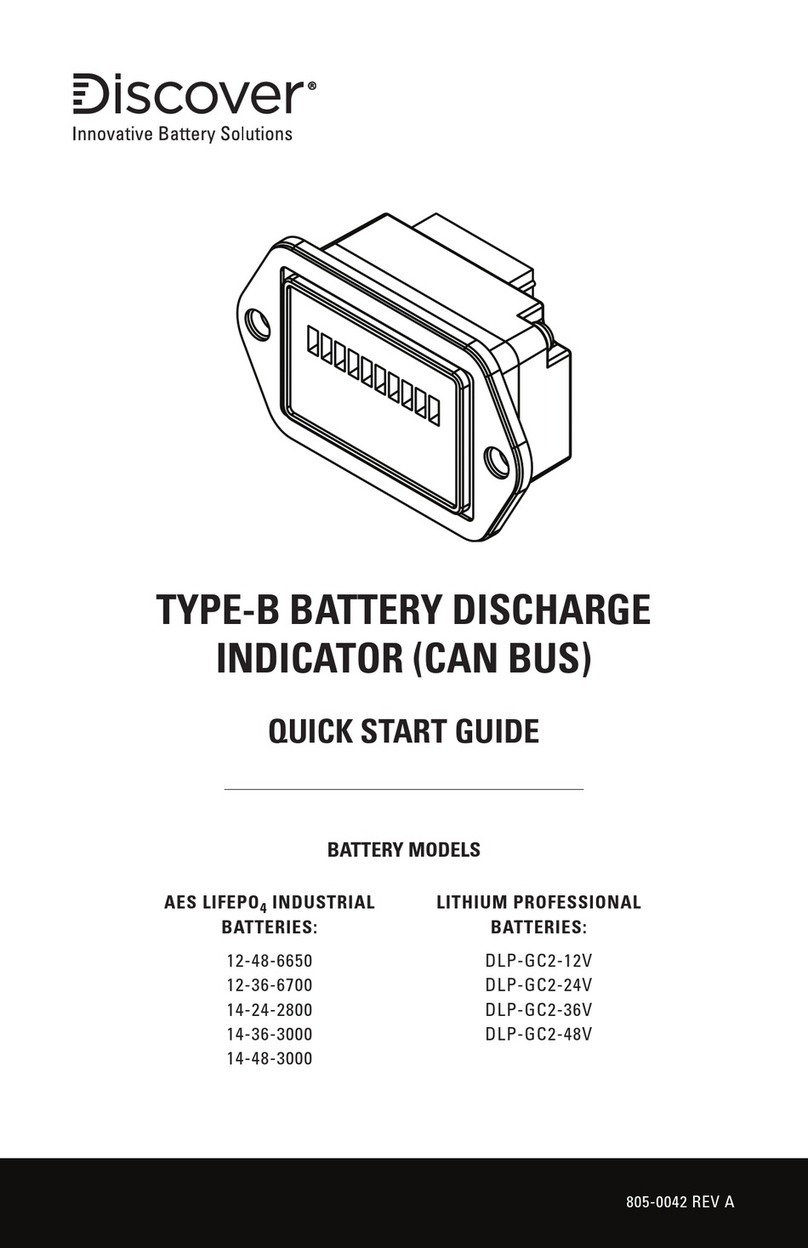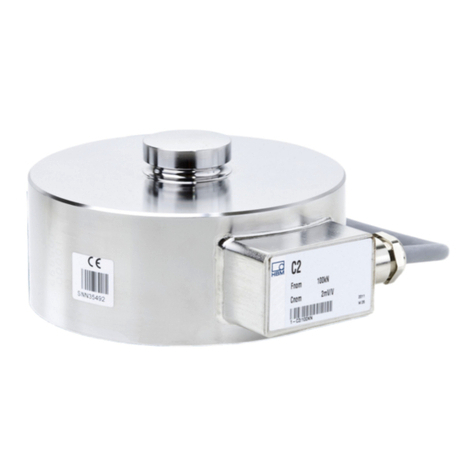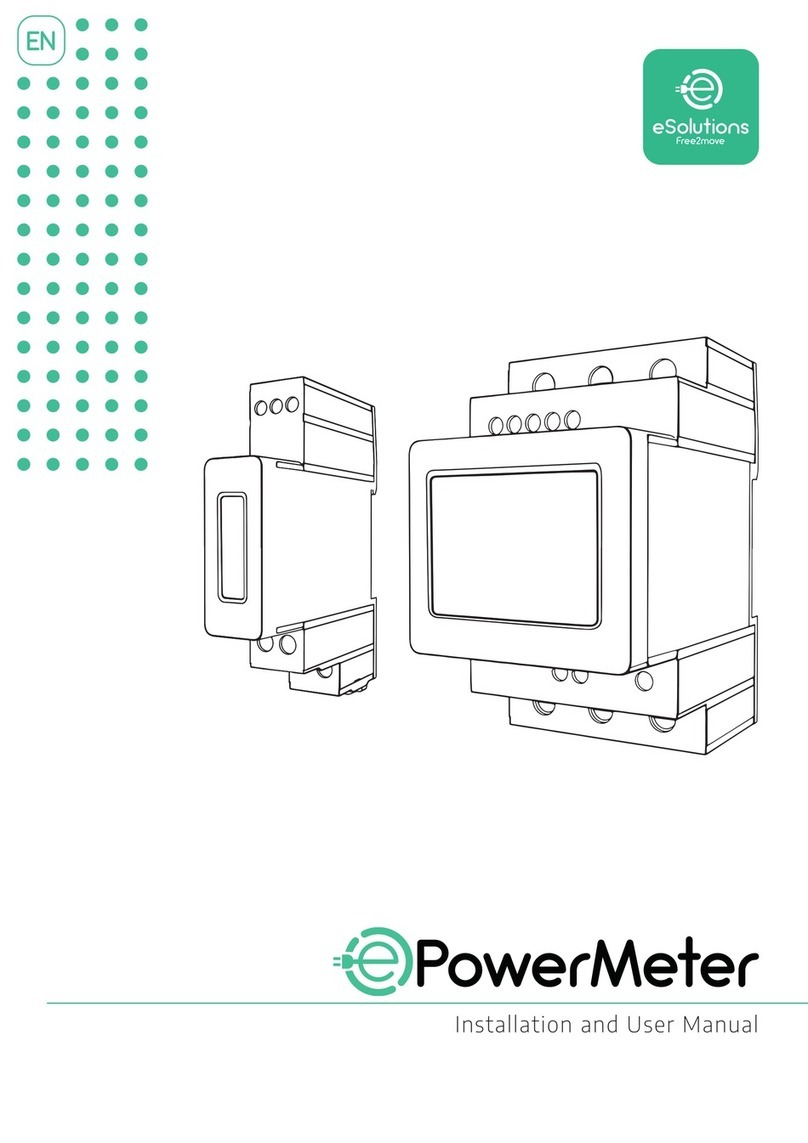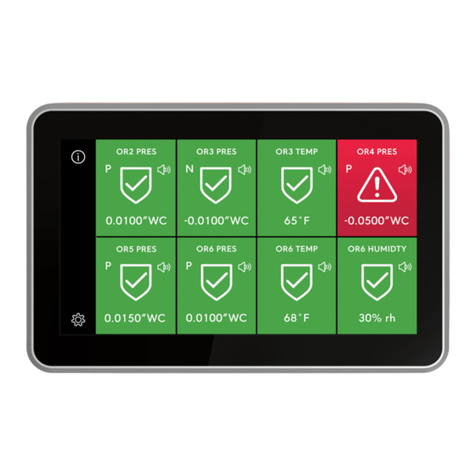Geotechnical Instruments GA2000Plus User manual

Copyright© 2006 LFGASOM010 / Issue 1
GA2000 / GA2000Plus Gas
Analyser
Operating Manual
Geotechnical Instruments (UK) Ltd
Sovereign House
Queensway
Leamington Spa
Warwickshire
CV31 3JR
England
Tel: +44 (0)1926 338111
Fax: +44 (0)1926 338110
Email: sales@geotech.co.uk
www.geotech.co.uk


GA2000 / GA2000Plus Gas Analyser
LFGASOM010 / Issue 1 Geotechnical Instruments (UK) Ltd Page 1
TABLE OF CONTENTS
1. INSTRUCTIONS SPECIFIC TO HAZARDOUS AREA INSTALLATIONS......................................4
1.1 SAFETY RELATED INFORMATION INTHIS MANUAL ............................................................................4
1.2 SAFETY INFORMATION ....................................................................................................................4
2. INTRODUCTION .............................................................................................................................5
3. GENERAL OPERATIONAL FEATURES ........................................................................................6
3.1 MAIN FEATURES OF THE INSTRUMENT..............................................................................................6
3.2 PHYSICAL CHARACTERISTICS OF ANALYSER ....................................................................................6
3.3 SWITCHING THE ANALYSER ONAND OFF........................................................................................7
3.4 KEYPAD LOCK ................................................................................................................................7
3.5 WARM-UP SELF TEST.....................................................................................................................7
3.6 WARNING AND ERROR DISPLAY ......................................................................................................8
3.7 COLD START ..................................................................................................................................8
3.8 STORAGE.......................................................................................................................................9
3.9 BATTERY/CHARGING ......................................................................................................................9
3.10 ‘READ GAS LEVELS’ SCREEN ...................................................................................................... 9
3.11 EVENT LOG (OPTIONAL UPGRADE)..............................................................................................9
3.12 CALIBRATION RECORD (OPTIONAL UPGRADE) .............................................................................10
3.13 TECHNICIAN LOG IN...................................................................................................................10
3.14 MEMORY ..................................................................................................................................11
3.15 CO MEASUREMENTS ................................................................................................................ 11
3.16 ZERO TRANSDUCERS................................................................................................................11
3.17 UPDATE SITE DATA ..................................................................................................................11
3.18 DATA LOGGING.........................................................................................................................11
3.19 PRINT DATA .............................................................................................................................12
3.20 ADJUST CONTRAST...................................................................................................................12
3.21 GAS FLOW FROM BOREHOLE (OPTIONAL UPGRADE) ................................................................... 12
4. TAKING READINGS .....................................................................................................................13
4.1 PRELIMINARY CHECKS.................................................................................................................. 13
4.2 UPDATE SITE DATA ......................................................................................................................13
4.3 TAKING READINGS - WITH ID........................................................................................................13
4.4 TAKING READINGS – WITHOUT ID................................................................................................. 15
4.5 TEMPERATURE PROBE READING...................................................................................................16
4.6 EXTERNAL GAS POD READING ......................................................................................................16
4.7 ANEMOMETER PROBE READING ....................................................................................................16
4.8 FLOW POD READING ....................................................................................................................16
4.9 CROSS-GAS EFFECTS ..................................................................................................................16
5. MODEM OPERATION...................................................................................................................17
6. CALIBRATION .............................................................................................................................. 19
6.1 INTRODUCTION.............................................................................................................................19
6.2 CALIBRATION GASES....................................................................................................................20
6.3 SET-UP.......................................................................................................................................21
6.4 EQUIPMENT..................................................................................................................................21
6.5 GAS ANALYSER............................................................................................................................ 22
6.6 LOW LEVEL CALIBRATION - MIXTURES 1AND 2 .............................................................................. 22
Step One ........................................................................................................................................... 23
Step Two ........................................................................................................................................... 23
Step Three......................................................................................................................................... 24
Step Four........................................................................................................................................... 24
6.7 SPAN MULTI GAS .........................................................................................................................25
6.8 HIGH LEVEL CALIBRATION - MIXTURE 3 .........................................................................................25
Step One ........................................................................................................................................... 25
Step Two ........................................................................................................................................... 26
Step Three......................................................................................................................................... 26

GA2000/GA2000Plus Gas Analyser
Page 2 Geotechnical Instruments (UK) Ltd LFGASOM010 / Issue 1
6.9 CALIBRATION OF THE CO CHANNEL .............................................................................................. 27
Step One ........................................................................................................................................... 27
Step Two ........................................................................................................................................... 27
6.10 CALIBRATION OF THE CO CHANNEL (H2COMPENSATED)IN GA2000 PLUS.................................. 28
Step One ........................................................................................................................................... 28
Step Two ........................................................................................................................................... 29
Step Three......................................................................................................................................... 29
6.11 TROUBLE SHOOTING.................................................................................................................30
6.12 CONFIRM CALIBRATION.............................................................................................................30
6.13 FACTORY SETTINGS .................................................................................................................31
6.14 LAST FIELD CALIBRATION..........................................................................................................31
7. SERVICE .......................................................................................................................................32
8. TECHNICAL SPECIFICATION ..................................................................................................... 33
9. EC DECLARATION OF CONFORMITY .......................................................................................35
10. APPENDIX 1 EVENT LOG............................................................................................................36
11. INSTRUCTIONS FOR SAFE USE – ITALIAN LANGUAGE......................................................... 38
11.1 ISTRUZIONI SPECIFICHE PER LE INSTALLAZIONI IN AREE PERICOLOSE........................................... 38
11.2 INFORMAZIONI DI QUESTO MANUALE RELATIVE ALLA SICUREZZA ..................................................38
11.3 INFORMAZIONI SULLA SICUREZZA ...............................................................................................39
11.4 VISUALIZZAZIONE DI AVVERTENZE ED ERRORI.............................................................................39
11.5 BATTERIA/RICARICA .................................................................................................................. 39
11.6 LETTURA DEL RILEVATORE DELLA TEMPERATURA .......................................................................39
11.7 ACCESSORI CHE NON POSSONO ESSERE USATI IN UN'ATMOSFERA POTENZIALMENTE ESPLOSIVA..39
11.8 TARATURA................................................................................................................................40
11.9 MANUTENZIONE........................................................................................................................40
11.10 DICHIARAZIONE DI CONFORMITÀ EC ..........................................................................................41
12. INSTRUCTIONS FOR SAFE USE – GERMAN LANGUAGE.......................................................42
12.1 ANWEISUNGEN FÜR INSTALLATIONEN IN GEFAHRENBEREICHEN ..................................................42
12.2 SICHERHEITSRELEVANTE INFORMATIONEN IN DIESEM HANDBUCH ...............................................42
12.3 SICHERHEITSINFORMATION .......................................................................................................43
12.4 WARN-UND FEHLERANZEIGE ....................................................................................................43
12.5 AKKU/LADEVORGANG ...............................................................................................................43
12.6 TEMPERATURFÜHLER................................................................................................................ 43
12.7 ZUBEHÖR,DAS IN EINEM EXPLOSIONSGEFÄHRDETEN BEREICH NICHT EINGESETZT WERDEN DARF.44
12.8 KALIBRIERUNG..........................................................................................................................44
12.9 WARTUNG................................................................................................................................44
12.10 EG-KONFORMITÄTSERKLÄRUNG................................................................................................ 45
13. INSTRUCTIONS FOR SAFE USE – FRENCH LANGUAGE........................................................ 46
13.1 INSTRUCTIONS SPECIFIQUES POUR LES INSTALLATIONS DANS DES EMPLACEMENTS DANGEREUX ..46
13.2 INFORMATIONS EN MATIERE DE SECURITE CONTENUES DANS LE PRESENT MANUEL ......................46
13.3 INFORMATIONS EN MATIERE DE SECURITE .................................................................................. 47
13.4 AFFICHAGE D’AVERTISSEMENTS ET D’ERREURS..........................................................................47
13.5 BATTERIE/MISE EN CHARGE ......................................................................................................47
13.6 SONDE DE MESURE DE TEMPERATURE .......................................................................................47
13.7 ACCESSOIRES NON UTILISABLES EN ATMOSPHERES POTENTIELLEMENT EXPLOSIVES....................47
13.8 ETALONNAGE ...........................................................................................................................48
13.9 ENTRETIEN...............................................................................................................................48
13.10 DECLARATION DE CONFORMITE CE ...........................................................................................49
14. INSTRUCTIONS FOR SAFE USE – SPANISH LANGUAGE.......................................................50
14.1 INSTRUCCIONES ESPECÍFICAS PARA INSTALACIONES EN ÁREAS DE PELIGRO...............................50
14.2 INFORMACIÓN RELACIONADA CON LA SEGURIDAD EN ESTE MANUAL. ............................................50
14.3 INFORMACIÓN DE SEGURIDAD....................................................................................................51

GA2000 / GA2000Plus Gas Analyser
LFGASOM010 / Issue 1 Geotechnical Instruments (UK) Ltd Page 3
14.4 ADVERTENCIA Y VISUALIZACIÓN DE ERROR.................................................................................51
14.5 BATERÍA/CARGA.......................................................................................................................51
14.6 LECTURA DE LA SONDA DE TEMPERATURA.................................................................................. 51
14.7 ACCESORIOS QUE NO PUEDEN UTILIZARSE EN UNA ATMÓSFERA POTENCIALMENTE EXPLOSIVA .....51
14.8 CALIBRACIÓN ...........................................................................................................................52
14.9 REVISIÓN .................................................................................................................................52
14.10 DECLARACIÓN DE CONFORMIDAD CE ........................................................................................53

GA2000/GA2000 Plus Gas Analyser
Page 4 Geotechnical Instruments (UK) Ltd LFGASOM010 / Issue 1
1. Instructions Specific to Hazardous Area Installations
(Reference European ATEX Directive 94/9/EC, Annex II, 1.0.6.)
The following instructions apply to equipment covered by certificate numbers Sira 06ATEX2202X:
•The equipment may be used with flammable gases and vapours with apparatus group IIA and
temperature class T1
•The equipment is only certified for use in ambient temperatures in the range 0 ºCto +40 ºCand
should not be used outside this range
•Installation shall be carried out in accordance with the applicable code of practice by suitably
trained personnel
•Repair of this equipment shall be carried out in accordance with the applicable code of practice.
•The manufacturer will specify those materials which are important to the type of protection.
•When the GA2000 or GA2000 Plus methane detector is in the hazardous area it shall only be
externally attached via connector A to devices that are marked with the certificate number Sira
06ATEX2202X.
•If the equipment is likely to come into contact with aggressive substances, e.g. acidic liquids or
gases that may attack metals, or solvents that may affect polymeric materials, then it is the
responsibility of the user to take suitable precautions, e.g. regular checks as part of routine
inspections or establishing from the material’s data sheet that it is resistant to specific chemicals
that prevent it from being adversely affected, thus ensuring that the type of protection is not
compromised.
The GA2000/GA2000 Plus Gas Analyser has been certified to Hazardous Area Classification
II2G EEx ibd IIA T1 (Ta = 0ºC to +40ºC)
It is vital the instructions in this manual are followed closely.
It is the responsibility of the operator to determine the protection concept and classification required for
aparticular application.
1.1 Safety Related Information In This Manual
Information in this manual that may affect the safety of users and others is preceded by the following
symbol: Warning.
Failure to follow this information may result in physical injury which in some cases could be fatal.
1.2 Safety Information
Warning The GA2000/GA2000 Plus can be used for measuring gases from landfill sites
and other sources as described in this manual. Inhaling these gases may be
harmful to health and in some cases may be fatal. It is the responsibility of the
user to ensure that he/she is adequately trained in the safety aspects of the gases
being used and appropriate procedures are followed. In particular, where
hazardous gases are being used the gas exhausted from the analyser must be
piped to an area where it is safe to discharge the gas. Hazardous gas can also be
expelled from the instrument when purging with clean air.

GA2000 / GA2000Plus Gas Analyser
LFGASOM010 / Issue 1 Geotechnical Instruments (UK) Ltd Page 5
2. Introduction
This manual explains how to use the GA 2000 range of Landfill Gas Analysers. This includes the
GA2000 and GA2000Plus.
There are a number of versions of the GA2000 analyser, and several options. Where a section in the
manual applies only to some of the versions, this is indicated in the section heading
Note Gas analysers are a sensitive piece of scientific equipment, and should be treated
as such.

GA2000/GA2000 Plus Gas Analyser
Page 6 Geotechnical Instruments (UK) Ltd LFGASOM010 / Issue 1
3. General Operational Features
3.1 Main features of the Instrument
The instrument includes the following main features
Measurement of the following gases:
Methane and Carbon Dioxide by Infra-Red Absorption
Oxygen
Carbon monoxide
Hydrogen sulphide
Hydrogen compensated Carbon Monoxide (Plus version only)
Other gases - contact supplier
Measurement of gas flow from borehole (optional)
Measurement of borehole pressure
Measurement of barometric pressure
Temperature of gas in borehole (optional)
3.2 Physical Characteristics of analyser
Front View
Right Hand View
Right hand view shows two gas inlets. The far
inlet is for the gas sample for analysis. The near
inlet is for the pressure measurement.
On/off Key
Return buttonReturn Key
Pump KeyBacklight Key
Scroll Keys:
2, 4, 6 & 8

GA2000 / GA2000Plus Gas Analyser
LFGASOM010 / Issue 1 Geotechnical Instruments (UK) Ltd Page 7
Left Hand View
Left hand view shows gas outlet and connectors
Whenever a key is pressed the unit will emit a short ‘beep’ as an acknowledgement. This function
cannot be turned off.
3.3 Switching The Analyser On And Off
When switching the analyser on a long beep will be emitted followed by the Geotechnical Instruments
(UK) Ltd logo being displayed. The power on self-test will then commence. Following this the service
reminder screen will be displayed. Pressing return will take you to the technician log in screen (if this
function is turned on) followed by the main gas reading screen.
When switching the analyser off, the on/off button must be held down for approximately 1.5 seconds,
at which point a clean air purge will be carried out. If for any reason the analyser ‘locks-up’ and will not
switch off in this manner, press and hold the on/off button for 15 seconds; this will force the instrument
to switch off.
Whenever a key is pressed the unit will emit a short ‘beep’ as an acknowledgement.
3.4 Keypad lock
The keypad can be locked by pressing and holding the ‘backlight’ key for 2 seconds. This will avoid
accidental key presses when carrying the analyser. Press and hold again to unlock the keypad.
3.5 Warm-up Self Test
When switched on the read-out will perform a pre-determined self-test sequence taking approximately
30-40 seconds depending on the types of chemical cells fitted. During this time many of the analyser’s
functions are tested, including:
•General operation
•Pump function
•Gas flow measurement
•Calibration
•Backlight function
•Solenoid function
During the self-test the following information is also displayed:
•Manufacturers service due date
•The last gas check date
•Software version programmed
•Date format
•Serial number
•Operating language
•Baud rate
•The currently enabled sales options

GA2000/GA2000 Plus Gas Analyser
Page 8 Geotechnical Instruments (UK) Ltd LFGASOM010 / Issue 1
3.6 Warning and Error Display
During the self-test, if any operational parameters are out of specification or the pre-programmed
recommended calibration/service date has passed, errors or warnings may be displayed. Only three
warnings/errors can be displayed at any time. To ascertain if more have occurred use the ‘’and ‘’
key to scroll down/up the list.
Warnings Displayed
All warnings displayed will be prefixed by the word ‘WARNING‘ followed by a relevant description.
There are two types of warning that may be displayed, firstly the general warnings that may not affect
the instrument’s function and those where the self-test has detected a function that is outside the usual
programmed operating criteria, e.g. battery charge low, memory nearly full. The second being
operational parameters that could affect the performance of the analyser: Cell out of calibration, CH4
out of calibration, CO2out of calibration.
The most likely reason for the errors is either an incorrect user calibration, or sensor failure. If an
incorrect user calibration has caused the warning it should be correctable by way of returning the
instrument to factory settings, zeroing or carrying out a user calibration as necessary for the relevant
function.
Errors Displayed
All errors displayed will be prefixed by the word ‘ERROR‘ followed by a error code. The errors detected
by the self-test are usually caused by a user calibration being out of specification or possible memory
corruption and will affect the instrument’s function and should therefore be corrected before use, e.g.
01-User cal data, CH4reading out of specification, 02-User cal data, CO2reading out of specification,
04-User cal data, Cell 1 reading out of specification.
Note If any other types of warning or error are displayed it is advisable to contact
Geotechnical Instruments (UK) Ltd for further information.
Under and Over Range Codes
If a reading is under range (ie below zero) it will be displayed with ‘less than’ chevrons (<<). This can
occur if a channel has been incorrectly calibrated.
If a reading is over range (ie above the maximum allowed reading) it will be displayed with ‘more than’
chevrons (>>).
Anumber displayed as ‘*’ indicates an error and a ‘#’ indicates where no data is available.
3.7 Cold Start
Note This function should only be used as a last resort. For gas calibration error
messages ensure a factory setting and user calibration has been carried out first.
Acold start should only be carried out to correct an instrument if no other course of action has proved
successful, as this function will clear the instrument memory entirely, reset all factory settings and reset
the internal time and date to a default setting.
To carry out a cold start, turn the analyser on and during the self-test press continue to hold the ‘’key
until such time as the self-test has been completed. Upon completion of the self-test a ‘Passcode
Entry’ screen will be displayed. At this point the ‘’key may be released. Enter the code ‘12345’ and
press ‘’to confirm.

GA2000 / GA2000Plus Gas Analyser
LFGASOM010 / Issue 1 Geotechnical Instruments (UK) Ltd Page 9
After the passcode entry has been accepted the instrument’s serial number will be displayed along with
the hours of operation and two options:
•1-Cold Start
•0-Exit
Only select option ‘1’ if a cold start is to be carried out. After selection, key ‘1’ will require pressing
again to confirm this operation. The cold start menu will be displayed again; press key ‘0’ to continue
with normal operation.
3.8 Storage
The analyser should not be exposed to extremes of temperature. Do not keep the analyser in a hot
car.
When not in use analysers should be kept in a clean, dry and warm environment, such as an office.
The read-out should be discharged and fully charged at least once every four weeks, regardless of
indicated charge state. The discharge function may be carried out with the use of the ‘Data Logging’
function.
3.9 Battery/Charging
Warning The battery charger is NOT covered by the Ex certification. The battery must be
charged only in a safe area.
The battery used in the GA 2000 Platform is Nickel Metal Hydride and manufactured as an
encapsulated pack from six individual cells. This type of battery is not so susceptible to the top-up
charging ‘memory effects’ as Nickel Cadmium batteries, although it is not recommended that the unit
be given small top-up charges. The charger should only be disconnected when ‘charged’ is indicated.
The battery charger is intelligent and will indicate when the unit is charging, charged or if there is a
fault. A full charge should take approximately two hours.
3.10 ‘Read Gas Levels’ Screen
The ‘Read Gas Levels’ screen is also considered to be the normal operation screen and all operations
are carried out from this starting point.
The actual data displayed on this screen will depend on the version of the instrument and the options
that have been selected. In general all of the main readings will be displayed. The instrument will only
connect to the Gas Analyser Manager PC software whilst in this screen.
3.11 Event Log (Optional Upgrade)
The GA2000 and GA2000Plus analysers incorporate the facility for a log of events. This can be used
as an aid to monitoring the use of the analyser. It can also be used as a diagnostic tool if there is a
problem with the analyser. The event log can be viewed via the Gas Analyser Manager software. It
cannot be viewed on the analyser screen.
Alist of the events that are logged is included in the appendix. Applicable events are stored in the
event log automatically. No user intervention is required.
The log can hold approximately 1000 events. If the log becomes nearly full a warning will be given on
the start up screen. If the log becomes full then no further events will be stored.
The log can be downloaded, viewed, and cleared by using the Gas Analyser Manager PC software.
The log is also cleared when the analyser is cold started.

GA2000/GA2000 Plus Gas Analyser
Page 10 Geotechnical Instruments (UK) Ltd LFGASOM010 / Issue 1
3.12 Calibration record (optional upgrade)
The GA2000 and GA2000Plus have the facility to log user calibrations. This can be used as an aid to
ensuring that gas measurements are valid and accurate.
A‘confirm calibration’ option will display in the calibration menu. When selected a further sub-menu is
displayed which allows the user to select which gas to confirm. The result is displayed as a table giving
target, factory, and actual gas values. This option is available only for the three main gases.
Amulti-gas ‘confirm calibration’ option is also available in the sub-menu. This allows the calibration of
the CH4, CO2,and O2channels to be confirmed with a single key press.
The analyser will record the following in the event log. For each entry the time and date will be stored.
Event Data recorded
Successful User zero Ch4 Readings before and after
Successful User span Ch4 Target Value, Readings before and after
Successful User zero Co2 Readings before and after
Successful User span Co2 Target Value, Readings before and after
Successful User zero O2 Readings before and after
Successful User span O2 Target Value, Readings before and after
Successful User zero CELL1 Readings before and after
Successful User span CELL1 Target Value, Readings before and after
Successful User zero CELL2 Readings before and after
Successful User span CELL2 Target Value, Readings before and after
Successful User zero CELL3 Readings before and after
Successful User span CELL3 Target Value, Readings before and after
Successful User zero internal flow Readings before and after
Failed User zero Ch4 Reading
Failed User span Ch4 Target Value, Gas Reading
Failed User zero Co2 Reading
Failed User span Co2 Target Value, Gas Reading
Failed User zero O2 Reading
Failed User span O2 Target Value, Gas Reading
Failed User zero CELL1 Reading
Failed User span CELL1 Target Value, Gas Reading
Failed User zero CELL2 Reading
Failed User span CELL2 Target Value, Gas Reading
Failed User zero CELL3 Reading
Failed User span CELL3 Target Value, Gas Reading
Failed User zero internal flow Reading
Confirm Ch4 calibration Target, Factory and Actual gas values
Confirm Co2 calibration Target, Factory and Actual gas values
Confirm O2 calibration Target, Factory and Actual gas values
This calibration event log can be downloaded and viewed via the Gas Analyser Manager PC software.
It cannot be viewed on the analyser screen.
3.13 Technician log in
This facility allows the operating technician to log in when the analyser is switched on and to tag all
subsequent readings with a four character technician ID.
The technician selects their ID/Name from a pre-loaded list before proceeding to the reading screen.
The 4 character ID will be tagged to all subsequent readings.
The list of IDs and names is created using Gas Analyser Manager. Alternatively the user can create a
new 4-digit ID from the keypad by pressing key 5 at the technician log in screen.
The log in facility can be disabled using Gas Analyser Manager software.
The technician ID is displayed on the view readings screen.
Technician names can be uploaded into the instrument via the Gas Analyser Manager PC software.

GA2000 / GA2000Plus Gas Analyser
LFGASOM010 / Issue 1 Geotechnical Instruments (UK) Ltd Page 11
3.14 Memory
The analyser's memory is volatile, although it is retained by a battery back-up system.
The memory is not to be used as a permanent storage medium and any data should be transferred to
amore permanent storage medium as soon as possible. An analyser should never be stored for
prolonged periods with valuable data in its memory.
Although unlikely, sudden shocks, high levels of electromagnetic interference or static discharge may
cause memory corruption or loss. If this occurs the memory should be cleared and the calibration re-
set to factory settings before further use. To clear the memory a confirmation code must be entered.
3.15 CO Measurements
Measurements of CO are important in Landfill Management. The PLUS version of the analyser
incorporates an improved CO measurement.
Normal measurements of CO can be affected by two other gases that can be found in Landfill gas –
Hydrogen and Hydrogen Sulphide.
To reduce the effect of Hydrogen, the PLUS version of the instrument uses a technique that is
Hydrogen compensated. Hydrogen compensation is achievable up to a level or around 1% Hydrogen.
Above this level the CO reading can be incorrect.
In order to assist the operator the PLUS instrument also indicates the level of Hydrogen present as
low, medium, or high. If a high Hydrogen reading is present then the CO reading may be affected.
The effect of Hydrogen Sulphide is eliminated by the use of a filter. The PLUS version will prompt the
user to connect the filter at the appropriate time.
3.16 Zero Transducers
Allows the relative pressure transducer to be user zeroed. Upon selection the current relative pressure
reading is displayed. The operation will be carried out when the ‘’is pressed.
3.17 Update Site Data
Allows the user to answer pre-defined questions (defined via PC software) relating to the site, e.g.
prevailing conditions.
3.18 Data Logging
Enables the user to leave the analyser unattended to take samples at a pre-determined time. The
reading interval and pump run-time may be edited prior to commencing the logging cycle.
Once the logging function has been activated the analyser will carry out a 30 second warm-up
countdown (displayed bottom right) and begin the first sample. After each sample the unit will shut
down to conserve power if the time between the pump ending and the next sample is greater than 30
seconds.
When the analyser is switched on during a logging cycle the company logo will be displayed for a few
seconds and the ‘Read Gas Levels’ screen will be displayed. This will initiate a 30 second countdown
to the next sample being taken, unless the logging function is stopped.
If for any reason during a logging cycle the inlet port were to become blocked, the analyser will sense
this as a flow fail during the ‘pump on’ time and will automatically retry until such time as a reading can
be obtained. Therefore care must be taken when positioning the sample tubing to ensure
water/moisture ingress does not occur.

GA2000/GA2000 Plus Gas Analyser
Page 12 Geotechnical Instruments (UK) Ltd LFGASOM010 / Issue 1
3.19 Print Data
Allows all the data currently stored to be printed. This may only be carried out with an appropriate
RS232 cable (available from Geotechnical Instruments (UK) Ltd) and a printer with a serial port
connection, or a PC based ‘Terminal’ programme.
3.20 Adjust Contrast
The GA2000/GA2000 Plus automatically adjusts the screen contrast to maintain a normal viewing
contrast according to the current read-out temperature.
Manual adjustment of the contrast is also available and can be carried out with use of the ‘<’and ‘>’
cursor keys. The manually set contrast setting is retained when the read-out is switched off and
therefore may require re-setting when next switched on.
3.21 Gas flow from borehole (Optional upgrade)
The analyser has the capability to measure the gas flow from a borehole without the need for an
additional flow pod. The user is automatically prompted to take this measurement during the normal
reading sequence. This function can be selected as on or off for each ID using Gas Analyser Manager.
If it is off the user will not be prompted to measure the flow.

GA2000 / GA2000Plus Gas Analyser
LFGASOM010 / Issue 1 Geotechnical Instruments (UK) Ltd Page 13
4. Taking Readings
Warning Inhaling hydrogen sulphide gas can cause death. It is the responsibility of the user
to ensure that he/she is adequately trained in the safety aspects of using H2S. In
particular, where hazardous gases are being used the gas exhausted from the
analyser must be piped to an
area where it is safe to discharge the gas.
Hazardous gas can also be expelled from the instrument when purging with clean
air.
4.1 Preliminary Checks
Prior to going to site, it is good practice to ensure:
•All necessary ID codes and readings have been uploaded
•The time and date are correct
•The water trap has a clean and dry filter fitted
•The inlet port microfibre filter is clean and dry
•Asupply of spare filters is available in case of accidental water blockage or contamination
•The battery has a good charge (minimum 25% charge, even if only a few readings are required)
DO NOT charge the battery for 25% of the charge time
•The memory has sufficient space available
•The CH4, H2Sand CO readings have been auto-zeroed, without gas concentration present
•If necessary, check the span calibration with a known concentration calibration-check gas
Travel to site with the read-out in the vehicle's interior - not in the boot, where it may be subjected to
extremes of temperature and possible shock damage. Do not place the read-out against anything hot
(e.g., gas extraction pipe, car body or in an unattended car during the summer) as this will cause a
temperature wave through the read-out and may cause erroneous readings.
When moving around a site, protect the read-out from strong direct sunlight and heavy rain. Strong
direct sunlight will quite quickly raise the temperature of the read-out beyond its operating range and
the LCD display will appear almost black and the contrast setting cannot alter the contrast.
Always use the water trap! If the water trap becomes flooded, change the filter and ensure all tubes
are clear before re-use.
4.2 Update Site Data
Prior to taking the readings at a particular site the site data should be updated (if programmed). This is
accessed via the ‘General’ menu ‘’. This function removes the need for the site conditions to be
recorded manually.
Aseries of up to five questions can be pre-programmed with the use of Gas Analyser Manager
software and answered at this time. The answers to these questions are stored and appended to each
reading stored thereafter, until the site data is updated for another site.
4.3 Taking Readings - With ID
For this function to be used it is essential that the relevant ID and, if required, previous readings are
uploaded to the analyser. A reading ID cannot be entered from the analyser.
1When the ‘Read Gas Levels’ screen is displayed, option ‘Next ID’ should be selected. A list of
stored IDs is displayed for selection via the ‘’and ‘’cursor keys. The next ID on the list is
automatically highlighted. To confirm selection press ‘’. The display may be toggled to display
any relevant ID information; this may be a description of the borehole location, work to be carried
out, etc.
2 A prompt is displayed to ensure all tubes are disconnected, as a clean air purge will automatically
be carried out at this point to ensure the previous sample is purged from the analyser. The time

GA2000/GA2000 Plus Gas Analyser
Page 14 Geotechnical Instruments (UK) Ltd LFGASOM010 / Issue 1
period for the purge is a user option and may be set via GAM software (default purge time is 30
seconds). Once ‘’is pressed the purge will start and the ‘Read Gas Levels’ screen will be
displayed. The purge may be aborted via the ‘’key.
3The ID number selected and the pump run-time are displayed in the upper left corner of the ‘Read
Gas Levels’ display.
4At this point connect the sample tube (with water trap) from the sample point to the inlet port of the
analyser, ensuring the connector ‘clicks’ into place.
5As soon as the connection is made the relative pressure reading will be displayed, no sample is
taken from the borehole at this time. When the reading has stabilised and the pump started, the
relative pressure reading will be stored and remain displayed at the pressure last displayed.
6The pump will run for the pre-programmed time and a countdown timer will be displayed. The
pump may be stopped or started at anytime by way of the ‘’(pump) key. The reading may be
stored at anytime with the use of the ‘’key, although when the pump automatically stops this
should be used as prompt to store the reading. Whilst the pump is running the instrument
continuously monitors the peak readings. These values are frozen when the pump stops. It is
possible to reset the peaks and the previously recorded relative pressure reading by pressing key
‘’effectively jumping back a stage.
7For the PLUS version of the analyser. After the store key is pressed the following question is
displayed ‘Are you using a H2S filter?’. Pressing the ‘’key confirms ‘YES’ a H2Sfilter is being
used. The operator than gets a chance to default this answer to subsequent readings. Assuming
the answer was ‘Yes’ the user is taken through to a separate screen that allows the H2Sfilter to be
removed so that a valid H2Sreading can be taken. The current reading is displayed whilst all the
other readings are frozen at their previous levels. Pressing the ‘’key again stores the complete
reading set and continues to the next stage. If key ‘1-Exit’ is pressed, this stage is skipped and
the H2S reading is NOT stored.
8If the ID has the “record borehole flow” flag selected, the analyser will now give you the option of
measuring the flow from the borehole. The GA2000 and GA2000Plus have the capability to
measure the gas flow from a borehole without the need for an additional flow pod. Connect the
sample tube from the borehole to the flow inlet port on the analyser (the lower of the two QRC
connectors). Follow the on screen prompts. If key ‘1-Exit’ is pressed, this stage is skipped and the
flow reading is NOT stored.
9The next stage when storing a reading is to answer any pre-programmed questions that may
require a numeric, alphanumeric, selectable comment or exclusive comment; the answer will be
displayed for input. Only a maximum of eight selectable and exclusive comments may be entered
in total for all questions requiring such input.
10 Disconnect the sample tubing from the borehole and proceed from step 3 for the next borehole.
For each reading the following information will be stored:
•ID code
•Current time/date
•Technician ID code
•Site data (if entered)
•All gas readings and balance (CH4,CO2, O2, H2S, CO or additional secondary Cells)
•Approximate Hydrogen level (Plus versions only)
•Peak CH4
•Peak CO2 and minimum O2 (Plus versions only)
•LEL CH4
•Barometric pressure
•Relative pressure
•Borehole specific questions/comments
•Temperature (if connected)
•Flow from borehole (optional)
•External gas pod (if connected)
•Anemometer (if connected)

GA2000 / GA2000Plus Gas Analyser
LFGASOM010 / Issue 1 Geotechnical Instruments (UK) Ltd Page 15
When the analyser is switched off a clean air purge is automatically started for a pre-determined time.
This ensures that the analyser is free from gas and ready for the next measurement. This may be
aborted with the use of the ‘’key, although we do not recommend this action.
Aflashing bell will be displayed next to the appropriate gas reading value if a pre-set alarm condition
has been passed.
4.4 Taking Readings – Without ID
1From the ID list select ‘Select No ID’, or if ID information has not been uploaded to the
analyser an ID list will not be available; in either case the ID will be displayed and stored as ‘- -
------‘.
2 A prompt is displayed to ensure all tubes are disconnected, as a clean air purge will
automatically be carried out at this point to ensure the previous sample is purged from the
analyser. The time period for the purge is a user option and may be set via GAM software
(default purge time is 30 seconds). Once ‘’is pressed the purge will start and the ‘Read Gas
Levels’ screen will be displayed. The purge may be aborted via the ‘’key.
3At this point connect the sample tube (with water trap) from the sample point to the inlet port of
the analyser, ensuring the connector ‘clicks’ in to place.
4As soon as the connection is made the relative pressure reading will be displayed; no sample
is taken from the borehole at this time. When the reading has stabilised and the pump started,
the relative pressure reading will be stored and remain displayed at the pressure last
displayed.
5The pump will run for the pre-programmed time and a countdown timer will be displayed. The
pump may be stopped or started at anytime by way of the ‘’(pump) key. The reading may
be stored at anytime with the use of the ‘’key, although when the pump automatically stops
this should be used as a prompt to store the reading. Whilst the pump is running the
instrument continuously monitors the peak readings this values are frozen when the pump
stops. It is possible to reset the peaks and the previously recorded relative pressure reading by
pressing key ‘’, effectively jumping back a stage.
6For the PLUS version of the analyser. After the store key is pressed the following question is
displayed ‘Are you using a H2S filter?’. Pressing the ‘’key confirms ‘YES’ a H2Sfilter is being
used. The operator than gets a chance to default this answer to subsequent readings.
Assuming the answer was ‘Yes’ the user is taken through to a separate screen that allows the
H2Sfilter to be removed so that a valid H2Sreading can be taken. The current reading is
displayed whilst all the other readings are frozen at their previous levels. Pressing the ‘’key
again stores the complete reading set and continues to the next stage. If key ‘1-Exit’ is
pressed, this stage is skipped and the H2S reading is NOT stored.
7The analyser will now give you the option of measuring the flow from the borehole. The
GA2000 and GA2000Plus have the capability to measure the gas flow from a borehole without
the need for an additional flow pod. Connect the sample tube from the borehole to the flow
inlet port on the analyser (the lower of the two QRC connectors). Follow the on screen
prompts. If key ‘1-Exit’ is pressed, this stage is skipped and the flow reading is NOT stored.
8Upon storing the reading a virtual keyboard will be displayed for any alphanumeric comments
to be entered.
9Disconnect the sample tubing from the borehole and proceed from step 1 for the next
borehole.
Except for the ID code information, which will be stored as ‘- - - - - - - -‘, and borehole questions, for
each reading the information stored will be the same as that for a reading with an ID.
Aflashing bell will be displayed next to the appropriate gas reading value if a pre-set alarm condition
has been passed.

GA2000/GA2000 Plus Gas Analyser
Page 16 Geotechnical Instruments (UK) Ltd LFGASOM010 / Issue 1
4.5 Temperature Probe Reading
The GA2000 and GA2000Plus have the facility to automatically display and record the borehole
temperature via an optional temperature probe.
When a temperature probe is fitted to external port 1 (RS232 port), the temperature will be displayed in
the ‘Read Gas Levels’ screen and recorded with all other data.
The temperature probe is part of the GA2000/GA2000 Plus Ex certification and is therefore certified for
use under the same conditions as the analyser.
4.6 External Gas pod Reading
The GA2000 can read external gas pods provided it does not have the two internal cells fitted. The GA
2000 Plus has the facility to read any external gas pod in addition to its internal chemical cells.
When a gas pod is fitted to the analyser’s external port 1 (RS232 port), the gas type and reading will be
displayed in the ‘Read Gas Levels’ screen and recorded with all other data. Please note when using
an external pod with the same gas type as an internal cell the external cell always overrides the
internal. The same value will be displayed and stored.
The gas pod is NOT part of the analyser Ex certification and is therefore NOT certified for use in
potentially explosive atmospheres.
4.7 Anemometer Probe Reading
The GA2000 and GA2000 Plus have the facility to automatically display and record high flow via an
optional anemometer probe.
When an anemometer probe is fitted to the analyser’s external port 2 (charger socket), the flow will be
displayed in the ‘Read Gas Levels’ screen and recorded with all other data.
Flow can be measured in either m/s (gas velocity) or m3/Hr (volume flow rate). In order to calculate the
volume flow rate the pipe diameter will need to be entered into the instrument, either manually or via
the Gas Analyser Management software.
The anemometer probe is NOT part of the analyser Ex certification and is therefore NOT certified for
use in a potentially explosive atmosphere.
4.8 Flow Pod Reading
If the internal flow option has been selected at the time of manufacture (or subsequently upgraded)
then an external flow pod cannot be used.
If the internal flow option has not been selected then an external flow pod can be used.
4.9 Cross-Gas Effects
Methane, Carbon Dioxide and Oxygen
Methane is measured using dual beam infra-red absorption. Analysers are calibrated using certified
methane mixtures and will give correct readings provided there are no other hydrocarbon gasses
present within the sample (e.g. ethane, propane, butane, etc.). If there are other hydrocarbons
present, the methane reading will be higher (never lower) than the actual methane concentration being
monitored.
The extent to which the methane reading is affected depends upon the concentration of the methane in
the sample and the concentration of the other hydrocarbons. The effect is totally non-linear and
difficult to predict.
Carbon Dioxide is measured by infra-red absorption at a wavelength specific to carbon dioxide.

GA2000 / GA2000Plus Gas Analyser
LFGASOM010 / Issue 1 Geotechnical Instruments (UK) Ltd Page 17
Therefore, the carbon dioxide reading will not be affected by any other gases usually found on landfill
sites.
The oxygen sensor is a galvanic cell type and suffers virtually no influence from CO2,CO, H2S,NO2,
SO2or H2,unlike many other types of oxygen cell.
The infrared sensors will not be "poisoned" by other hydrocarbons and will revert to normal operation
as soon as the gas sample has been ‘purged’.
CO measurement
For a GA2000Plus the CO measurement is compensated for hydrogen cross sensitivity up to a
concentration of 1% hydrogen. If a hydrogen concentration above 1% is present, the CO reading will
become inaccurate.
The CO measurement is sensitive to hydrogen sulphide. The presence of hydrogen sulphide will
cause the CO reading to be too high. If the presence of hydrogen sulphide is suspected, then it is
recommended that the external hydrogen sulphide filter is used to obtain the CO measurement. The
GA 2000 Plus incorporates a procedure to make both the CO reading, with the H2Sfilter in place, and
the H2Sreading without the filter.
H2SMeasurement
The H2Smeasurement can be affected by other gases. The main cross gas effects are:
•SO2:20% effect
•NO2:20% effect
Other cross sensitivities are possible. If you suspect a cross sensitivity problem please contact you
supplier for additional information.
5. Modem operation
The GA2000 plus can be connected to a modem for remote access and download of data. This is of
use where the operator is remote from the location where the data is required. There are two modes of
operation.
Operator initiated
This mode allows the instrument operator to download data to a remote computer.
The following equipment is required:
At analyser location: GA2000Plus
Compatible modem (landline or GSM)
At central location: PC with Windows 2000/ME/XP
Gas Analyser Manager software
Modem connected to PC
The following procedure should be followed.
1At the central location the Gas Analyser Manager software should be started on the PC. This
can be left running even if the PC is required for other tasks.
2At the analyser location the analyser should be connected to the modem. If the modem is a
landline type, then it will need to be plugged into a telephone socket. If it is a GSM type then a
suitable signal strength must be present.
3Switch the analyser on.

GA2000/GA2000 Plus Gas Analyser
Page 18 Geotechnical Instruments (UK) Ltd LFGASOM010 / Issue 1
4From the instrument menu select “download data via modem”. Upon entering the download
screen the instrument will initialize the modem using a pre-stored string. The screen will show
'modem NOT CONNECTED', the initialization string, the current time and date and the phone
number to be dialed along with a brief description.
5At this point the user has three options -:
Change the number to be dialed using the cursor keys. To create a list of phone numbers you
will need to use Gas Analyser Manager to enter and upload the information to the instrument
prior to selecting this option.
Prior to dialing you must ensure the computer attached to the modem at the remote end is
running Gas Analyser Manager and that the software is configured to listen for incoming calls
(Listener option on the Remote tab).
Dial the number shown using the enter key. The instrument will then attempt to connect to the
modem at the other end. The modem status will change from NOT CONNECTED to
CONNECTED (00:00.00) or FAILED ERROR (00). If the attempt fails the instrument screen
will remain unchanged otherwise a further sub-menu will be displayed. The instrument will
maintain and update the connection time every few seconds.
Exit using key 0. The instrument will return to the main reading screen.
3Upon a successful connection the user will have the following options available -:
Download readings.This option will download all readings to the central PC via the modem
connection. A “sending data” message will appear on the screen before returning to the menu
screen. The user will be informed if there have been any errors.
Clear readings. After successfully downloading data the user can clear those readings from
the instrument. After the user acknowledges an on-screen warning the readings will be
cleared. The user will be informed if there have been any errors.
Get tomorrows data. This option allows a set of Ids, questions and comments to be sent from
Gas Analyser Manager to the analyzer. Gas Analyser Manager must first be configured to
define a ‘route’ to be uploaded.
Drop connection.This will disconnect the modem and return the user to the previous screen.
If the PC end or local telecom’s drops the connection a “connection lost message” will appear
and the instrument will return to the previous screen.
Central location initiated
This mode allows a central location to initiate the download process.
The following equipment is required:
At analyser location: GA2000Plus
Compatible modem (landline or GSM)
At central location: PC with Windows 2000/ME/XP
Gas Analyser Manager software
Modem connected to PC
The following procedure should be followed.
1At the analyser location, connect the analyser to the modem. If the modem is a landline type,
then it will need to be plugged into a telephone socket. If it is a GSM type then a suitable signal
strength must be present.
2Switch the analyser and modem on.
This manual suits for next models
1
Table of contents

